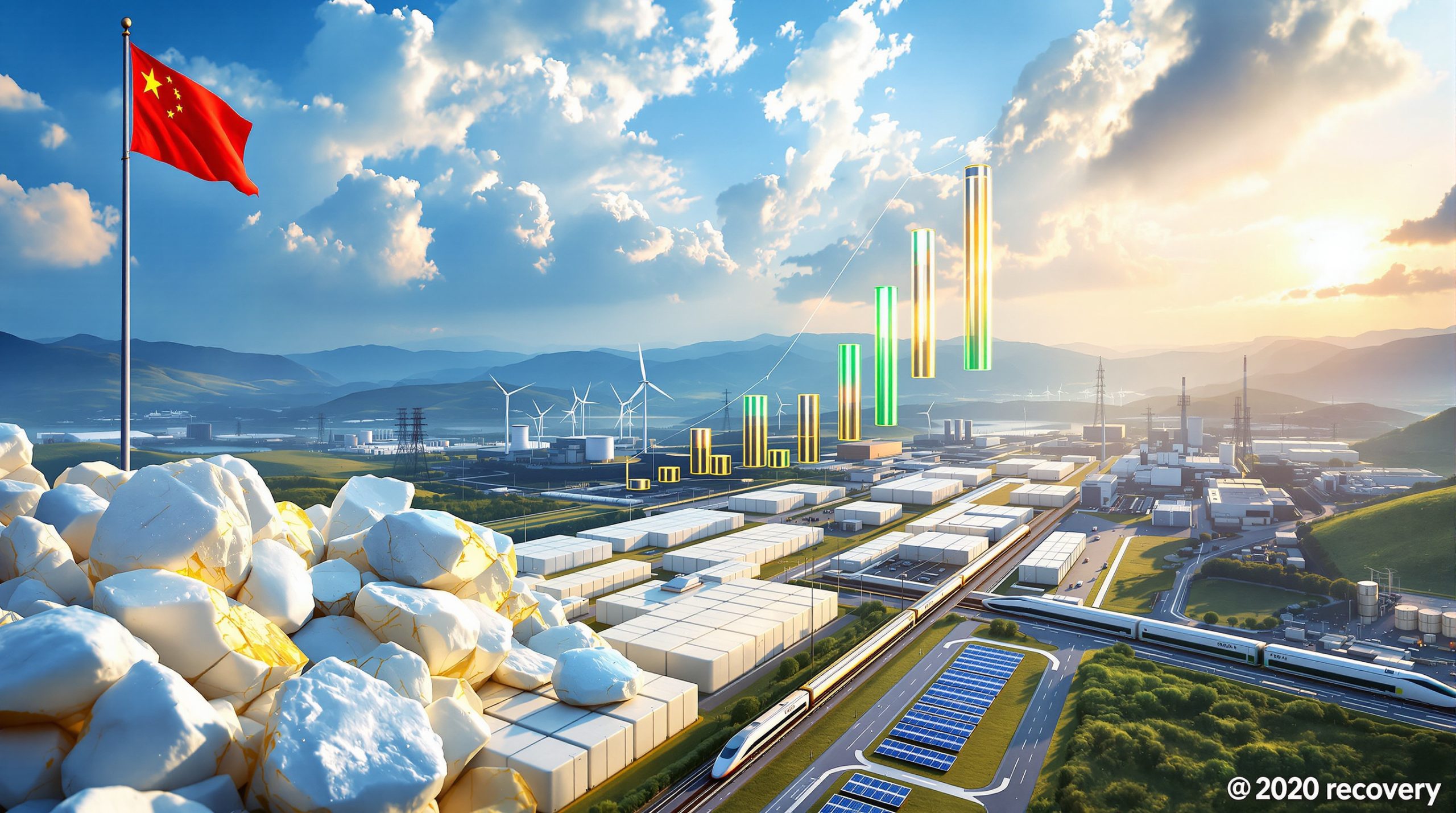What Makes Vale's Return to Iron Ore Leadership Significant?
The global iron ore market represents one of the most critical commodity sectors, directly feeding the world's steel production infrastructure. When Brazilian mining giant Vale announced its intention to Vale reclaiming top spot in global iron ore production, industry analysts took notice of the potential shift in market dynamics that could reshape supply chains worldwide. Furthermore, these developments align with broader iron ore price trends that influence global commodity markets.
Understanding the Global Iron Ore Production Hierarchy
The iron ore production landscape features a concentrated group of major players, with production capacity measured in hundreds of millions of metric tons annually. Currently, Rio Tinto holds the position as the world's largest iron ore producer, a title that Vale previously dominated for decades.
The hierarchy among major producers includes:
• Rio Tinto – Current market leader with extensive Australian operations
• Vale – Brazilian mining conglomerate seeking to regain top position
• BHP – Australian mining giant with significant iron ore assets
• Fortescue Metals Group – Australian iron ore specialist focusing on high-volume production
This competitive landscape drives innovation in mining efficiency, infrastructure development, and operational optimisation across the sector. In addition, companies are implementing modern mine planning processes to enhance operational effectiveness.
Vale's Historical Dominance vs. Recent Market Shifts
Vale's journey from market leader to challenger reflects broader changes in global mining operations and market conditions. The company's extensive Brazilian mining operations, particularly in the iron ore-rich regions of Minas Gerais and Pará, historically provided substantial competitive advantages through high-grade ore deposits and integrated logistics infrastructure.
Recent market developments have created opportunities for production leadership changes, influenced by factors including operational efficiency improvements, infrastructure investments, and strategic capacity expansions. However, the shift in market leadership positions demonstrates how quickly competitive dynamics can evolve in the mining sector.
How Did Vale Achieve Record-Breaking Performance?
Vale's operational improvements reflect systematic investments in mining infrastructure, technology integration, and production optimisation strategies. The company's focus on enhancing extraction efficiency and reducing operational bottlenecks has positioned it for potential market leadership recapture.
S11D Mine Sets New Production Benchmarks
The S11D mining complex in Brazil's Pará state represents one of Vale's most significant operational achievements. This facility utilises advanced mining technologies and integrated processing systems to maximise ore extraction efficiency whilst maintaining quality standards demanded by global steel producers.
Key operational features of the S11D complex include:
• Advanced crushing and screening systems for optimised ore processing
• Integrated rail transportation infrastructure connecting mines to port facilities
• Environmental management systems designed to minimise ecological impact
• Automated mining equipment reducing operational costs and improving safety metrics
The facility's design emphasises scalable production capacity, allowing Vale to adjust output levels based on market demand and operational efficiency targets. Consequently, these rail haulage improvements have become essential for maintaining competitive positioning.
Strategic Operational Improvements Drive Growth
Vale's operational enhancement strategy encompasses multiple dimensions of mining efficiency. The company has invested significantly in technology upgrades, workforce training programmes, and infrastructure modernisation to achieve sustainable production increases.
According to Vale's CEO Gustavo Pimenta, speaking at a mining conference in Salvador, the company believes it is operating at peak operational performance levels. This assessment reflects systematic improvements across Vale's mining operations, from extraction techniques to transportation logistics.
Vale's confidence in reclaiming global iron ore production leadership stems from comprehensive operational improvements and strategic infrastructure investments that have enhanced mining efficiency across its Brazilian operations.
What Factors Position Vale to Reclaim Global Leadership?
Multiple strategic advantages position Vale for potential market leadership recovery. The company's geographic concentration in Brazil provides operational synergies and cost efficiencies that distributed mining operations cannot easily replicate.
Production Capacity Expansion Analysis
Vale's production capacity expansion focuses on maximising output from existing high-quality ore deposits whilst maintaining operational efficiency standards. The company's Brazilian mining assets contain some of the world's highest-grade iron ore reserves, providing natural competitive advantages in production economics.
Capacity expansion strategies include:
- Optimisation of existing mining operations through technology integration
- Infrastructure improvements enhancing transportation and processing efficiency
- Workforce development programmes improving operational expertise and safety performance
- Environmental compliance upgrades ensuring sustainable mining practices
Competitive Advantages Over Rio Tinto
Vale's competitive positioning against Rio Tinto relies on several structural advantages inherent to its Brazilian operations. The integrated nature of Vale's mining, processing, and transportation infrastructure creates operational efficiencies that distributed mining networks struggle to match.
Geographic advantages include proximity to major shipping routes for Asian steel markets, reduced transportation costs through integrated rail systems, and access to high-grade ore deposits that require less processing to meet steel industry specifications. Furthermore, industry analysis suggests these advantages align with current ore demand insights affecting global markets.
2025 Target Achievement Trajectory
Vale's timeline for reclaiming production leadership reflects careful assessment of operational capacity and market conditions. The company's executives express confidence in achieving this goal within the current calendar year, suggesting that production improvements are already yielding measurable results.
Disclaimer: Production forecasts and market leadership projections involve inherent uncertainties related to operational performance, market conditions, and competitive responses that may affect actual outcomes.
How Will Vale's Market Resurgence Impact Global Iron Ore Dynamics?
Vale's potential return to production leadership could significantly influence global iron ore supply chains, pricing dynamics, and steel industry procurement strategies. The concentration of production capacity among major mining companies amplifies the impact of leadership changes on market conditions.
Supply Chain Implications for Steel Manufacturing
Steel producers worldwide depend on consistent, high-quality iron ore supplies to maintain production schedules and quality standards. Changes in production leadership among major mining companies can affect supply reliability, pricing negotiations, and long-term contract structures.
Vale's Brazilian operations provide several supply chain advantages:
• Geographic diversification reducing supply chain concentration risks
• High-quality ore grades minimising steel production processing requirements
• Integrated logistics systems ensuring reliable delivery schedules
• Established trade relationships with major steel-producing regions
Price Realisation and Premium Strategies
Iron ore pricing reflects complex interactions between quality specifications, supply availability, and steel industry demand patterns. Vale's high-grade Brazilian ore typically commands premium pricing due to its chemical composition and processing advantages for steel manufacturers.
The company's potential production leadership could influence pricing power through increased market share and enhanced negotiating positions with steel industry customers. However, global iron ore pricing remains subject to broader economic conditions and steel demand fluctuations.
Geographic Distribution of Production Assets
Vale's concentrated Brazilian operations contrast with competitors' more geographically distributed assets. This concentration provides operational synergies but also creates geographic risk concentrations that competitors with diversified global operations may avoid.
The strategic implications of geographic concentration include reduced operational complexity, enhanced infrastructure integration, and streamlined management oversight, balanced against potential country-specific risks and transportation dependencies.
What Challenges Could Affect Vale's Leadership Goals?
Several operational and market factors could influence Vale's ability to sustain production leadership over time. Understanding these challenges provides context for evaluating the company's strategic position and long-term competitive prospects.
Pellet Production Headwinds and Market Demand
Iron ore pellet production represents a value-added processing stage that commands premium pricing but requires additional operational complexity and capital investment. Market demand for pellets fluctuates based on steel industry production methods and environmental regulations affecting steel manufacturing processes.
Vale's pellet production operations face challenges including:
• Technology upgrade requirements for meeting evolving environmental standards
• Market demand variability affecting production volume optimisation
• Competition from direct reduction processes that may reduce pellet demand
• Capital investment needs for maintaining competitive pellet quality specifications
Operational Risk Management Strategies
Large-scale mining operations involve inherent risks related to equipment reliability, workforce safety, environmental compliance, and geological conditions. Vale's risk management approaches must address these operational challenges whilst maintaining production efficiency targets.
Risk mitigation strategies encompass equipment maintenance programmes, safety training initiatives, environmental monitoring systems, and contingency planning for operational disruptions. The effectiveness of these programmes directly impacts sustainable production performance.
Environmental and Regulatory Considerations
Mining operations face increasing environmental scrutiny and regulatory oversight, particularly regarding water usage, waste management, and ecological impact mitigation. Vale's Brazilian operations must comply with evolving environmental standards whilst maintaining operational efficiency.
Regulatory compliance considerations include permitting requirements, environmental impact assessments, community engagement programmes, and restoration obligations. These factors influence operational costs and long-term sustainability of mining activities.
Which Mining Operations Drive Vale's Production Success?
Vale's production performance depends on the coordinated operation of multiple mining complexes, each contributing specific capabilities and production volumes to the company's overall output targets. For instance, these operations demonstrate how Vale reclaiming top spot in global iron ore production requires systematic coordination across multiple facilities.
S11D Northern Brazil Complex Performance
The S11D mining complex represents Vale's most technologically advanced iron ore operation, incorporating automated systems and integrated processing capabilities designed for high-volume, efficient ore extraction. This facility serves as a benchmark for operational excellence within Vale's mining portfolio.
Operational specifications include processing capacity measured in millions of tons annually, integrated transportation systems connecting mining areas to port facilities, and environmental management systems designed to minimise ecological impact whilst maintaining production efficiency.
Infrastructure Investment Returns
Vale's infrastructure investments in rail systems, port facilities, and processing equipment generate operational returns through improved efficiency, reduced transportation costs, and enhanced production flexibility. These investments represent substantial capital commitments that require careful financial planning and performance monitoring.
Infrastructure components include:
- Railway systems connecting mining operations to export terminals
- Port facilities optimised for bulk iron ore handling and shipping
- Processing equipment designed for ore beneficiation and quality control
- Maintenance facilities supporting equipment reliability and operational continuity
Technology Integration and Efficiency Gains
Advanced mining technologies enable production optimisation through automated equipment operation, real-time monitoring systems, and predictive maintenance programmes. Vale's technology integration efforts focus on maximising ore extraction efficiency whilst maintaining safety and environmental standards.
Technology applications include automated drilling and blasting systems, conveyor monitoring and control systems, ore quality analysis equipment, and integrated logistics management platforms that coordinate mining, processing, and transportation activities.
How Does Vale's Strategy Compare to Major Competitors?
Competitive analysis reveals distinct strategic approaches among major iron ore producers, each leveraging specific geographic advantages, operational capabilities, and market positioning strategies to maintain competitive positions. For example, considering the BHP strategic pivot demonstrates how companies adapt their approaches to market changes.
Rio Tinto's Current Market Position
Rio Tinto's leadership in global iron ore production reflects the company's extensive Australian operations, particularly in the Pilbara region, which contains some of the world's largest iron ore deposits. The company's integrated mining and transportation infrastructure provides operational advantages through economies of scale and operational efficiency.
Rio Tinto's competitive strengths include diversified geographic operations, advanced mining technologies, established customer relationships, and integrated logistics systems that optimise ore delivery to global steel markets.
BHP and Fortescue Metals Group Comparison
BHP and Fortescue Metals Group represent additional major competitors in the global iron ore market, each with distinct operational characteristics and strategic positioning approaches.
| Company | Primary Operations | Strategic Focus | Key Advantages |
|---|---|---|---|
| BHP | Australian Pilbara region | Diversified mining portfolio | Operational scale and efficiency |
| Fortescue | Australian iron ore specialist | High-volume production | Cost leadership strategy |
| Vale | Brazilian integrated operations | Production leadership recovery | High-grade ore quality |
| Rio Tinto | Global diversified mining | Market leadership maintenance | Geographic diversification |
Market Share Distribution Analysis
Global iron ore market share distribution reflects the concentrated nature of large-scale mining operations, with the top four producers controlling substantial portions of worldwide production capacity. Market share changes among these companies significantly impact global supply dynamics and pricing conditions.
Market concentration creates both competitive advantages for major producers and supply security concerns for steel industry customers who depend on consistent iron ore availability for production planning and inventory management.
What Does Vale's Leadership Mean for Global Steel Markets?
Vale's potential return to production leadership carries significant implications for global steel manufacturing, affecting supply security, pricing negotiations, and strategic procurement decisions across the steel industry.
Supply Security for Major Steel Producers
Steel producers prioritise supply security through diversified sourcing strategies, long-term contract arrangements, and quality assurance programmes. Vale's production leadership could enhance supply security options for steel manufacturers seeking reliable, high-quality iron ore sources.
Supply security considerations include:
• Source diversification reducing dependency on single suppliers or geographic regions
• Quality consistency ensuring steel production specifications are met reliably
• Delivery reliability maintaining production schedule adherence
• Contract flexibility allowing for demand fluctuation accommodation
Pricing Power and Negotiation Dynamics
Production leadership typically enhances pricing negotiation positions through increased market influence and supply capacity. Vale's market position could affect iron ore pricing dynamics, particularly for premium-grade ore that commands higher prices due to processing advantages.
Pricing negotiations reflect complex interactions between supply availability, quality specifications, delivery terms, and market conditions. Major producers' market positions influence their ability to achieve favourable pricing terms and contract conditions.
Long-term Contract Implications
Long-term supply contracts provide stability for both mining companies and steel producers, establishing predictable revenue streams and supply security arrangements. Vale's production leadership could influence contract negotiation dynamics and industry standard terms.
Contract considerations include pricing mechanisms, quality specifications, delivery schedules, volume commitments, and force majeure provisions. These agreements require careful risk assessment and performance monitoring by both parties.
FAQ: Vale's Iron Ore Production Leadership
When did Vale lose its top producer status?
Vale's loss of production leadership occurred over several years as competitive dynamics shifted within the global iron ore market. Rio Tinto's operational improvements and capacity expansions enabled the Australian mining company to surpass Vale's production volumes, establishing Rio Tinto as the current market leader.
The transition reflects broader industry trends including technological advancement, infrastructure development, and operational optimisation strategies implemented by major mining companies competing for market leadership positions.
What production volume is needed to reclaim leadership?
Reclaiming production leadership requires Vale to exceed Rio Tinto's current annual iron ore output, which typically ranges in the hundreds of millions of metric tons. Specific production volume targets depend on competitive responses and market conditions affecting all major producers.
Production leadership calculations must account for measurement methodologies, quality adjustments, and reporting standards that may vary among companies. Sustained leadership requires consistent operational performance over multiple production cycles.
How sustainable is Vale's operational improvement?
Operational improvement sustainability depends on Vale's ability to maintain enhanced efficiency levels whilst managing cost pressures, regulatory requirements, and market fluctuations. The company's infrastructure investments and technology integration efforts provide foundations for sustained performance improvements.
Sustainability factors include equipment reliability, workforce competency, environmental compliance, and market demand stability. Long-term operational success requires continuous improvement programmes and adaptive management strategies.
What role does Brazilian mining infrastructure play?
Brazilian mining infrastructure provides significant competitive advantages through integrated transportation systems, port facilities, and processing capabilities designed specifically for iron ore operations. Vale's infrastructure investments create operational synergies that distributed mining networks cannot easily replicate.
Infrastructure advantages include dedicated rail systems connecting mines to export terminals, specialised port facilities optimised for bulk ore handling, and integrated processing equipment that maximises ore quality and production efficiency.
Future Outlook: Sustaining Iron Ore Production Leadership
Vale's long-term competitive position depends on the company's ability to maintain operational excellence whilst adapting to evolving market conditions, environmental requirements, and technological developments affecting the mining industry. Ultimately, Vale reclaiming top spot in global iron ore production requires sustained commitment to operational excellence and strategic investment.
2026-2030 Production Expansion Plans
Strategic production expansion planning requires careful assessment of market demand projections, capital investment requirements, and operational capacity constraints. Vale's expansion strategies must balance growth objectives with financial performance targets and risk management considerations.
Expansion planning factors include:
- Market demand forecasting for steel industry iron ore requirements
- Capital allocation priorities balancing growth and operational efficiency
- Environmental compliance planning ensuring sustainable mining practices
- Technology integration strategies maintaining competitive operational capabilities
Investment Priorities and Capital Allocation
Capital allocation decisions significantly impact Vale's ability to maintain production leadership through operational improvements, infrastructure upgrades, and technology advancement programmes. Investment priorities must balance immediate performance needs with long-term competitive positioning requirements.
Priority investment areas include equipment modernisation, infrastructure maintenance and expansion, environmental compliance systems, and workforce development programmes that enhance operational capabilities and safety performance.
Market Positioning for Long-term Dominance
Long-term market dominance requires strategic positioning that anticipates industry evolution, competitive responses, and changing customer requirements. Vale's market positioning must address environmental sustainability, operational efficiency, and supply chain reliability demands.
Strategic positioning considerations include product quality differentiation, customer relationship management, geographic market presence, and operational flexibility that enables adaptation to changing market conditions and competitive challenges.
Disclaimer: Future production forecasts, market projections, and competitive analysis involve inherent uncertainties that may significantly affect actual outcomes. Investment and operational decisions should consider comprehensive risk assessments and multiple scenario planning approaches.
Further Exploration: Industry professionals seeking comprehensive iron ore market intelligence can access additional analysis through mining industry publications, commodity research services, and financial market platforms that provide ongoing coverage of global mining sector developments and market trends.
Ready to Capitalise on Major Mineral Discovery Opportunities?
Discovery Alert's proprietary Discovery IQ model delivers instant notifications on significant ASX mineral discoveries, empowering subscribers to identify actionable opportunities ahead of the broader market. Visit our discoveries page to understand why historic discoveries can generate substantial returns, then begin your 30-day free trial today to position yourself ahead of market movements.




